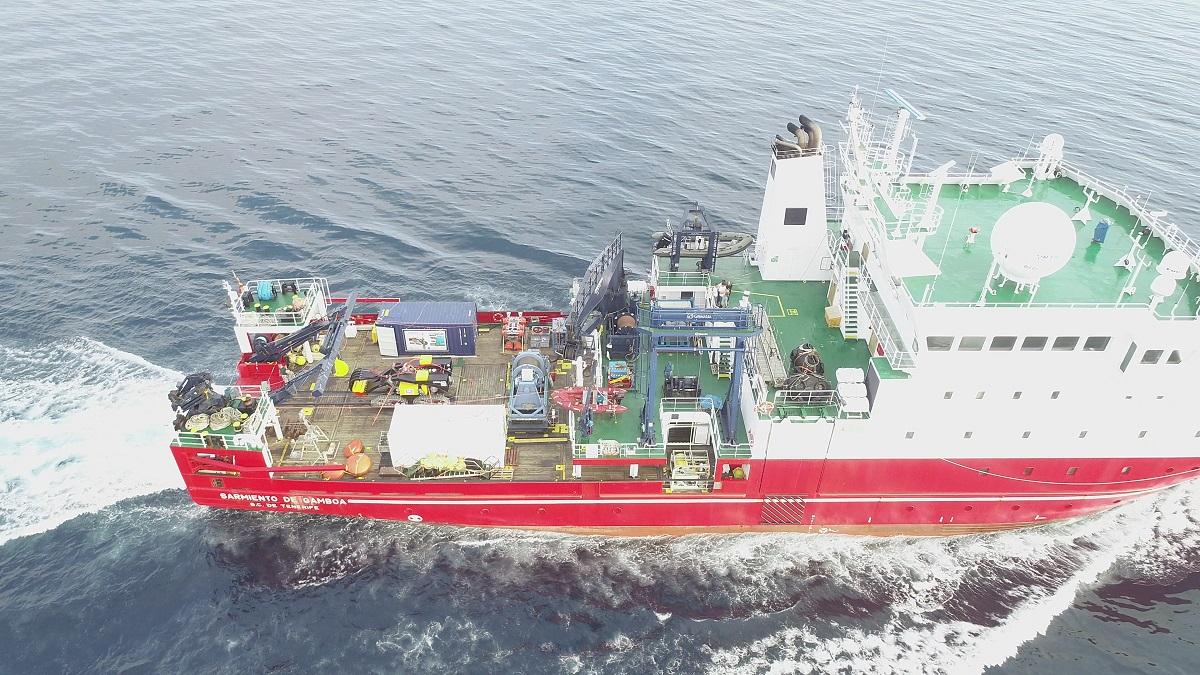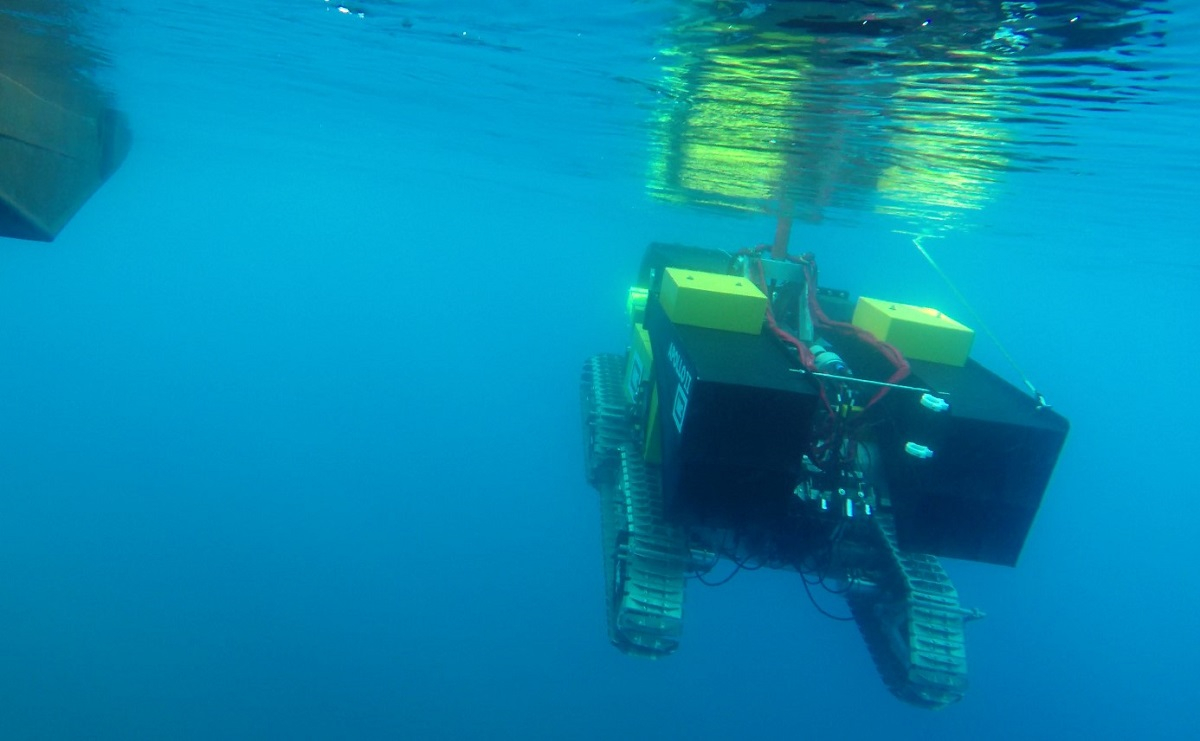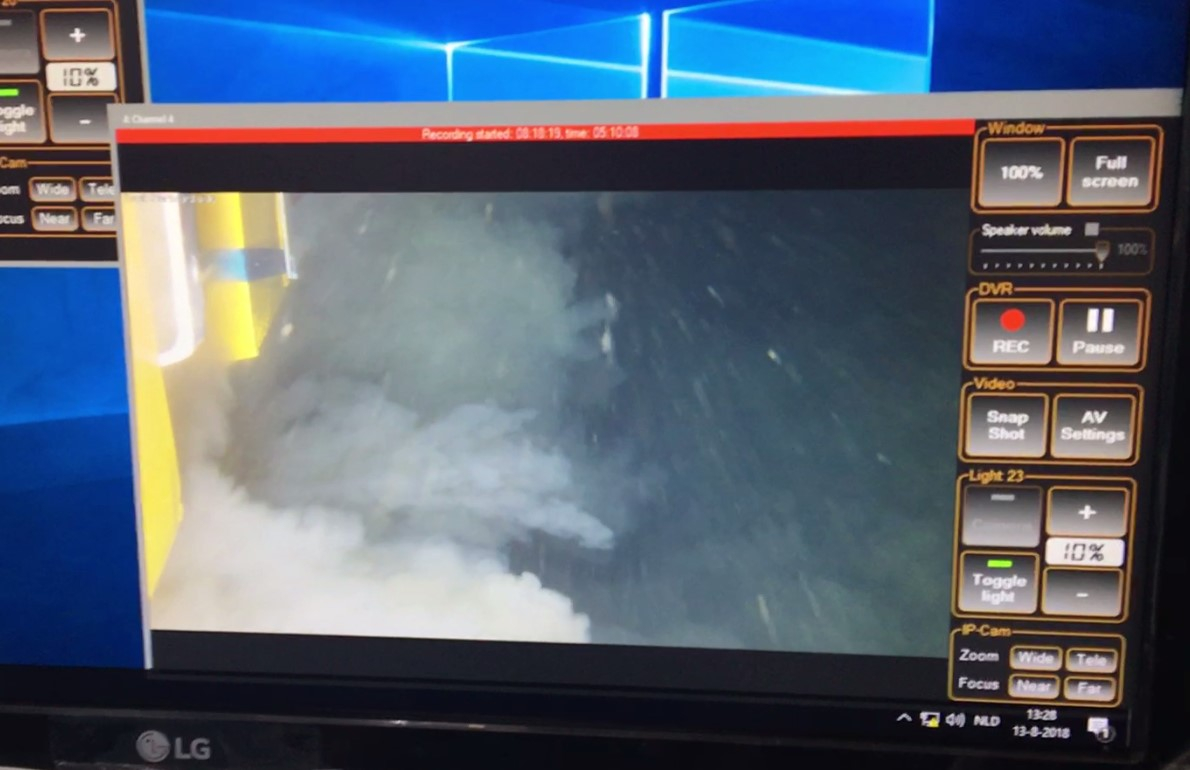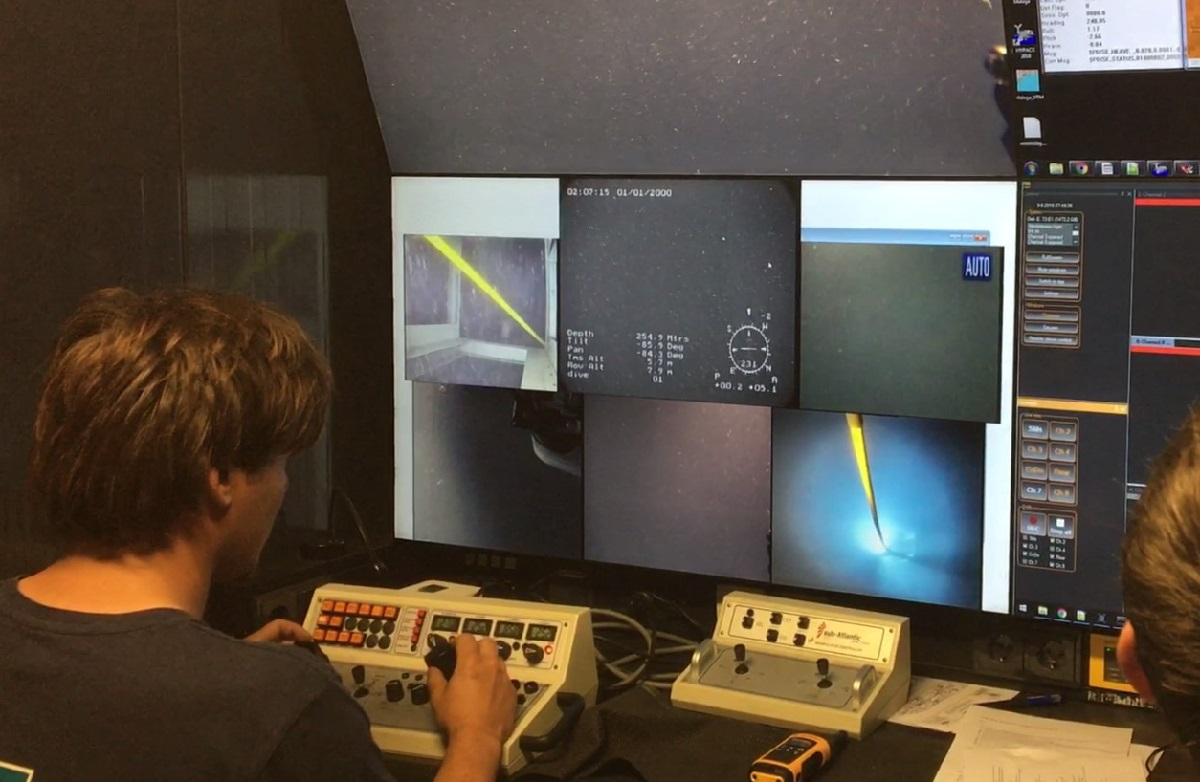First field trials of seabed mining project Blue Nodules successful
As NIOZ expedition leader Henko de Stigter says: ‘The field trial provides us with valuable quantitative data on disturbance of the seabed and size and extent of sediment plumes generated by the mining process. Such science-based data are much needed as input to the ongoing international debate about deep sea mining. Within the Blue Nodules project, our data will help the engineers to work on improving the environmental performance of the crawler’. The engineers of IHC Mining were very satisfied about the technical performance of the mining vehicle during its first test drive in a fully marine environment.
The trial cruise was carried out in the framework of the Blue Nodules project, funded by the EU under the Horizon 2020 program. In Blue Nodules, 14 industry and academic partners from 9 countries in Europe work together to develop a mining system for harvesting polymetallic nodules from the deep-sea floor with minimum environmental impact.
For more info look at: www.blue-nodules.eu



